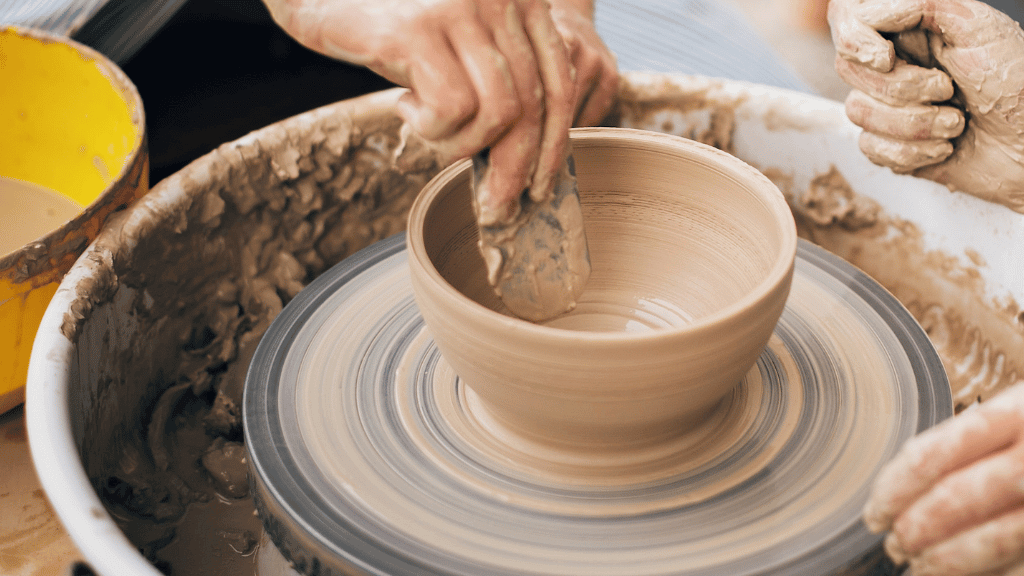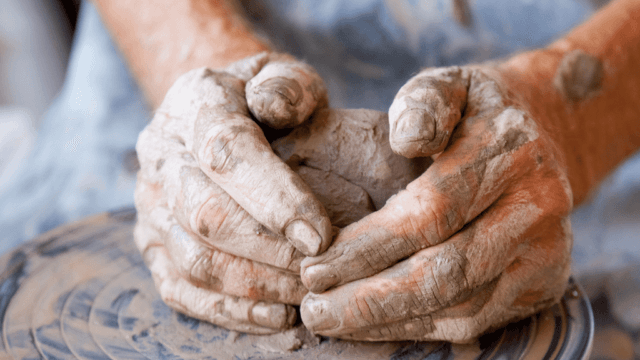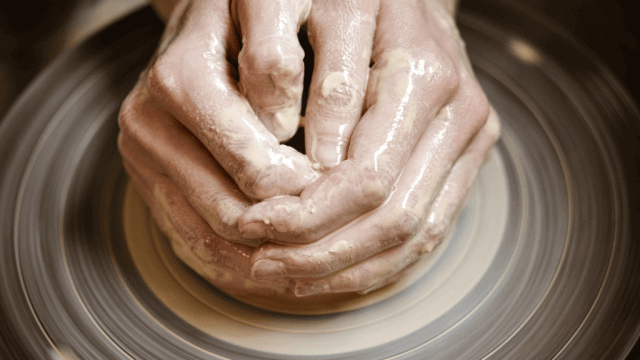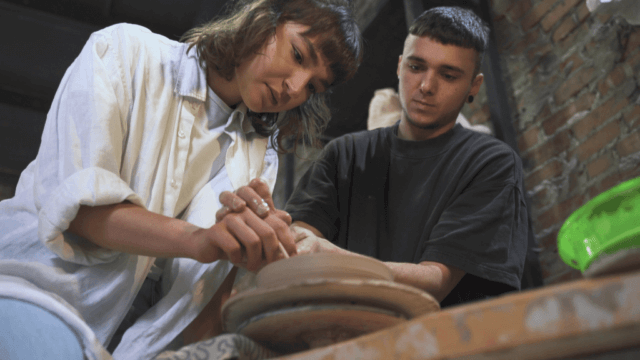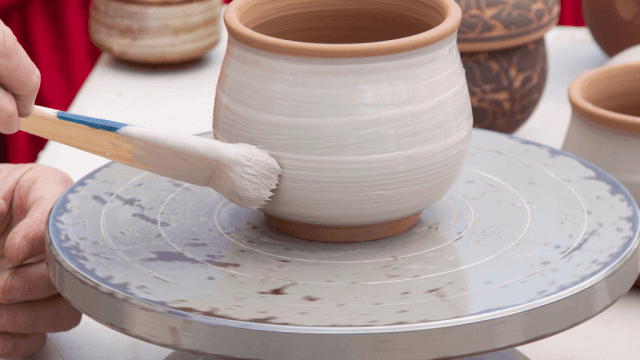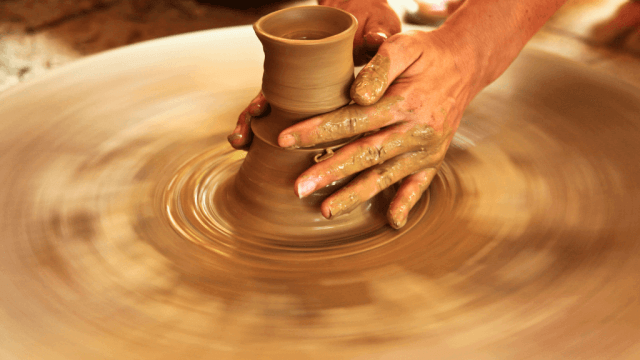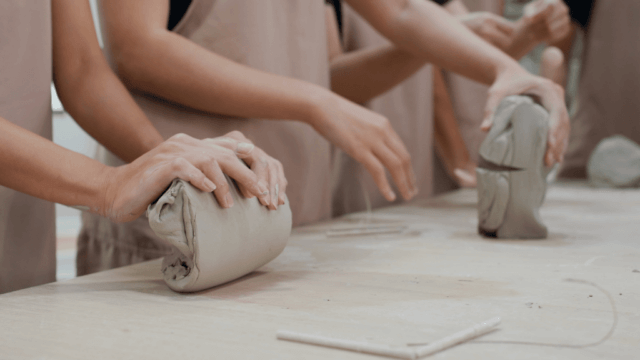Pinch pottery is a simple and ancient technique of hand-building ceramics, which involves shaping a ball of clay by gently pinching it between your fingers and thumbs to create a hollow form.
This method allows for the creation of small and organic-shaped pots, bowls, and sculptures without using any specialized tools or equipment.
Introduction to Pinch Pottery
Pinch pottery is an ancient and simple form of hand-building ceramics that has been used for thousands of years by various cultures around the world.
It is an approachable and versatile way to get started with pottery, making it a popular choice for beginners.
The Pinch Pottery Process
Preparing the Clay
Start by kneading and compressing the clay to remove any air bubbles and ensure a uniform consistency.
Next, roll the clay into a ball of the desired size, depending on the end product you want to create.
Forming the Base
Hold the clay ball in one hand and press your thumb into the center, creating an indentation.
Be careful not to pierce all the way through.
This forms the base of your pinch pot.
Shaping the Walls
Using your fingers and thumbs, gradually pinch and rotate the clay to create a uniform wall thickness.
Maintain a steady tension by supporting the outside of the pot with one hand while shaping the inside with the other.
Work upwards and outwards to achieve the desired shape and height.
Embarking on Your Pinch Pottery Journey
Experiment with Texture and Design
Once the basic shape of your pinch pot is established, you can further personalize it by adding texture, patterns, or designs.
Use your fingers, simple tools like a fork, toothpick, or wooden sticks, or even found objects like shells, leaves or lace to impress unique patterns into the wet clay.
Enhance with Handles and Attachments
To add functional or decorative elements like handles, spouts, or feet, score both the attachment and the area where it will be joined, apply slip (watery clay mixture) to both surfaces, and press the pieces together.
Smooth and blend the connection to ensure a secure bond.
Firing and Glazing
Allow your pinch pot to air-dry until it reaches a leather-hard state, then gently smooth the surface to remove any imperfections.
When completely dry, your work is ready for firing, which should be done at the appropriate temperature according to the type of clay used.
Finally, glaze the pot to add color or a glossy finish, taking care to follow the manufacturer’s instructions and recommended firing temperature for the glaze.
Pinch Pottery Tips and Tricks
Here are some helpful tips and tricks to achieve the best possible results while creating pinch pottery:
-
Keep your fingers slightly damp with water or slip to prevent the clay from sticking.
Excess water, however, can cause the clay to become too soft and difficult to work with, so use it sparingly.
-
Ensure that the walls of your pinch pot have a consistent thickness.
If the walls are uneven, your finished pot may be weakened or more susceptible to cracking during the drying and firing process.
-
Practice patience throughout the process – Pinch pottery is a slow and meditative technique that requires time and attention to detail to create beautiful pieces.
Pinch Pottery Upgrades and Variations
Expand your pinch pottery skills with these interesting upgrades and variations:
-
Double-wall pinch pots: Create two separate pinch pots and attach their rims to form a double-walled vessel.
This technique produces a more complex structure and unique aesthetics.
-
Pinch pot forms: Combine multiple pinch pots to create large or complex forms, such as animal sculptures, baskets, or teapots.
-
Decorative slip: Apply colored slip (liquid clay mixture) to the surface of your pinch pot to create patterns, designs, or textures before firing.
Pinch Pottery as a Teaching Tool
Pinch pottery is an excellent teaching tool for pottery beginners, children, and students of all ages.
Its simplicity and accessibility allow for a hands-on, tactile experience that helps develop and refine motor skills while encouraging creativity and self-expression.
Group workshops and educational programs can use pinch pottery to foster collaboration, introduce basic pottery concepts, and showcase the inspirational aspects of ceramics and art.
FAQ Section: Pinch Pottery
In this section, we will explore some of the most common questions about pinch pottery to help clarify any uncertainties and provide practical advice for creating your own pinch pots.
What type of clay is best for pinch pottery?
For beginners, a smooth and versatile clay, such as earthenware or stoneware, is ideal for pinch pottery.
These types of clay are easy to work with and have a low shrinkage rate, which reduces the likelihood of cracking during drying and firing.
How long does it take for a pinch pot to dry before firing?
It typically takes about one week for a pinch pot to air-dry completely, depending on factors such as the size and thickness of the piece, the humidity in your environment, and the moisture content of the clay.
Make sure your pinch pot is thoroughly dry before firing to avoid cracking or explosions in the kiln.
Can I use pinch pottery techniques with polymer clay or air-dry clay?
Yes, pinch pottery techniques can be applied to both polymer clay and air-dry clay, although the drying and finishing processes will be different.
Polymer clay does not need to be air-dried and is instead cured in an oven.
Air-dry clay, on the other hand, does not require firing and hardens as it air-dries.
How can I avoid cracking in my pinch pot during the drying and firing process?
To minimize cracking, ensure the walls of your pinch pot have a consistent thickness and try not to overwork the clay.
Allow the pinch pot to dry slowly and evenly, placing it in a sheltered spot away from direct sunlight or heat sources.
When loading the kiln, make sure your pinch pot is placed on a stable and properly prepared shelf, away from any drafts or cold spots that could cause temperature fluctuations during firing.
What types of glazes or finishes can be used on pinch pots?
Various glazes and finishes can be applied to pinch pots depending on the type of clay, the desired look, and the kiln temperatures achievable.
Make sure to choose a glaze compatible with the clay used and follow manufacturer’s instructions regarding application, drying times, and appropriate firing temperatures.
In addition to glazes, you can also use slip, underglazes, stains, or oxides to achieve a range of colors, patterns, and textures.
